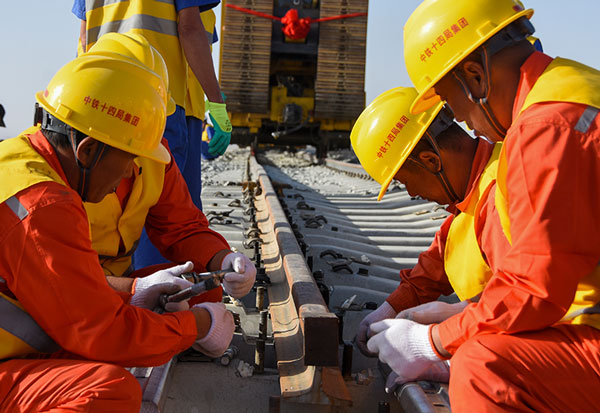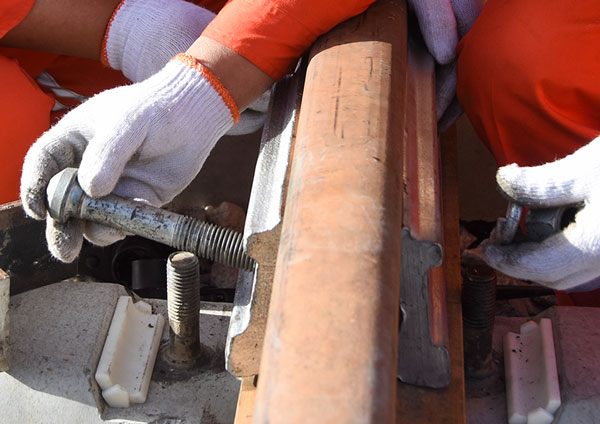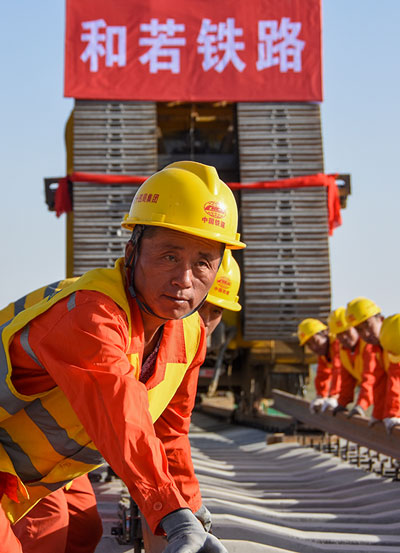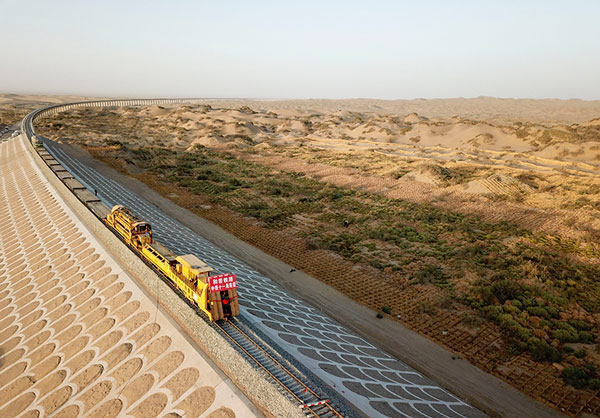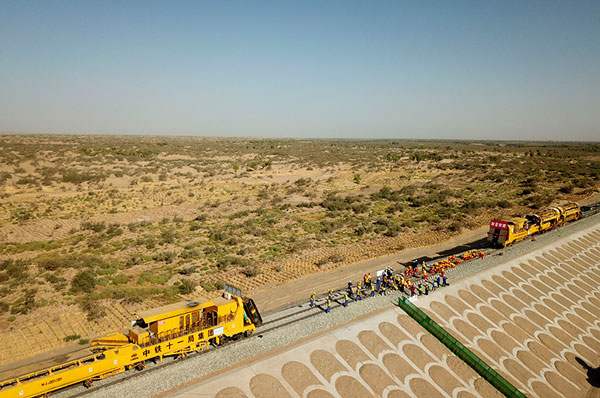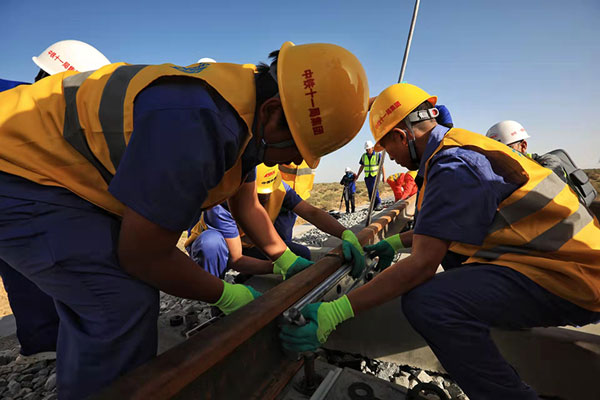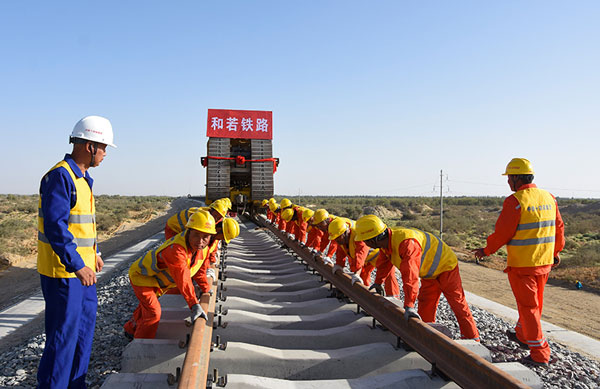
URUMQI — The track-laying work for the Hotan-Ruoqiang Railway, the final section of the Taklimakan Desert railway loop line, was completed on the morning of Sept 27 in Minfeng county in Northwest China's Xinjiang Uygur autonomous region.
Construction on the Hotan-Ruoqiang Railway started in December 2018. As a key national railway project extending over 825 km, it links up Hotan city in Hotan prefecture with Ruoqiang county in Bayingolin Mongolian autonomous prefecture.
When the railway goes into operation, it will fully encircle the Taklimakan Desert when connected with the existing Golmud-Korla Railway, the Kashgar-Hotan Railway and a number of other southern Xinjiang railways.
"This railway line runs through the southern edge of the Taklimakan Desert. Sandstorms pose a serious threat to railway construction and operation as tracks can be buried," said Yang Baorong, chief designer of the Hotan-Ruoqiang Railway.
Wang Jinzhong, chairman of Xinjiang Hotan-Ruoqiang Railway Co Ltd said anti-desertification programs and railway construction were carried out simultaneously, which is unprecedented in China. A total of 50 million square meters of grass grids were laid and 13 million seedlings were planted. Where the threat of sandstorms is greatest, viaducts were built to allow for safe passage.
As an important regional railway included in the national medium- and long-term railway network plan, the Hotan-Ruoqiang Railway is expected to open in June 2022.
At that time, five counties in southern Xinjiang and certain towns of the Xinjiang Production and Construction Corps will be connected to the provincial rail network, which is of great significance to promoting the economic and social development of southern Xinjiang.
"I'm proud to build a railroad for my hometown. I can't wait to see the railway in full operation," said Dursun Mememin, who is from Qiemo county. He has been working on the railway in the area for seven months.
He earned 7,000 yuan (about $1,084.3) per month working on the construction site of the railway, much more than what he could make growing dates back home.
"It used to take more than 10 hours from Qiemo county to Hotan city by car. When the railway is put into operation, it will be quicker and more comfortable to travel," said Dursun Mememin.
It will not only improve the travel conditions for residents along the route, end the history of no trains in many places, shorten the time for traveling, but also help speed up the economic development and the development of mineral resources along the route. It will also serve as a stimulant for tourism along the line, according to Wang.
"This railway will bring wealth, opportunities and more importantly, hope, along the route," Wang said.
